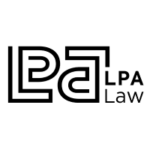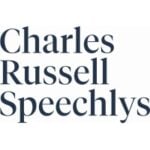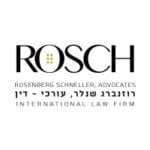-
Which factors bring an individual within the scope of tax on income and capital gains?
The main factors which bring an individual within the scope of UK tax on income and capital gains are their residence, their domicile (currently extended by the concept of deemed domicile), where their assets are located and the source of their income.
UK resident individuals are subject to income tax on their worldwide income and to capital gains tax on gains realised on the disposal of their worldwide assets. They may be able to claim relief under double tax treaties, unilateral relief and, currently, the remittance basis (the latter of which is only available to non-UK domiciled and not deemed domiciled individuals).
In contrast, a non-UK resident individual’s liability to income tax is generally limited to UK source income and capital gains tax on gains realised on disposals of UK real property (whether held directly or indirectly) or UK assets used in a UK trade.
An individual who is temporarily non-UK resident may be charged to income tax and capital gains tax, on certain income and capital gains which have arisen during their period of non-residence, when they return to the UK. They will be temporarily non-UK resident if, following a previous specified period of residence, they have become non-UK resident for a period (stated in the legislation to be five years or less, but possibly in certain scenarios to include a period of less than six complete tax years) and then they return to the UK and become UK resident.
An individual’s residence status is decided each tax year. It depends principally on the number of midnights that they spend in the UK in that tax year. The number of midnights an individual can spend in the UK without becoming UK resident may depend, in many cases, on the number of specific ‘ties’ they have to the UK.
There are different criteria used to decide on residence status depending on whether an individual has been UK resident in any of the three previous tax years. Certain automatic tests may determine UK residence including the number of midnights spent in the UK, if their only home is in the UK or if they work full time in the UK or abroad. If the automatic tests are not conclusive, specific ties to the UK will be considered – including whether they have (i) a UK resident spouse, civil partner or minor child (ii) available UK accommodation (iii) perform more than three hours work in the UK on 40 or more days in the tax year (iv) have spent 91 or more midnights in the UK in one or both of the two previous tax years and (v) spend more midnights in the tax year in the UK than in any other country.
Under the general principles of English law, every individual has, at any given time, a domicile in one country alone. An individual’s domicile generally depends, in the first place, on their father’s domicile at the time of the individual’s birth (known as the individual’s “domicile of origin”). Once they reach the age of 16, the individual may change their domicile to that of another country (their “domicile of choice”) by residing in that country (as their chief place of residence) with the intention of residing there permanently. If, later on, they cease to both reside in that country (as their chief place of residence) and to have that intention, their domicile may revert to their domicile of origin, unless they establish another domicile of choice.
Currently, an individual is deemed domiciled in the UK for income tax and capital gains tax purposes if they have been UK resident for at least 15 of the 20 previous tax years and have been UK resident for a tax year beginning after 5 April 2017. In addition, an individual who was born in the UK with a UK domicile of origin is deemed domiciled in the UK for income tax and capital gains tax purposes in any tax year in which they are UK resident.
From 6 April 2025 the concept of domicile as a connecting factor for income tax and capital gains tax will cease, with an individual’s liability being governed by years of residence (further details are set out in question 33). The concept of domicile will however remain for general law purposes, including succession.
-
What are the taxes and rates of tax to which an individual is subject in respect of income and capital gains and, in relation to those taxes, when does the tax year start and end, and when must tax returns be submitted and tax paid?
Generally, income tax is charged on an individual’s total income for each tax year minus any permitted deductions.
Of the individual’s total income for the tax year ending 5 April 2025, income falling within their personal allowance suffers no income tax, taxable income in the band up to £50,270 (having deducted the available personal allowance) suffers income tax at 20% (with dividends being taxed at 8.75%) , taxable income in the band £50,271 to £125,140 (having deducted the available personal allowance) suffers income tax at 40% (with dividends being taxed at 33.75%), and the balance of any surplus suffers income tax at 45% (with dividends being taxed at 39.35%). In the application of these rates and bands to an individual’s income, dividends are treated as the top slice of that income.
The above applies to taxpayers in England. As Scotland and Wales are devolved jurisdictions, they both have the power to set their own taxation rates.
An individual’s personal allowance is normally £12,570 for the tax year ending 5 April 2025, but is reduced by £1 for every £2 by which their adjusted net income (in essence total taxable income before the personal allowance and less certain reliefs) for that tax year exceeds £100,000. No personal allowance is available to an individual who claims the remittance basis for the relevant tax year. The personal allowance is only available to UK residents and limited categories of non-UK residents.
In addition, an individual may receive £500 of dividends in the tax year ending 5 April 2025 without any charge to income tax (although such dividends are still classed as taxable income and therefore still use up the ‘band’ for which different rates of income tax are charged).
Individuals within the scope of income tax with employment/self-employment income must also pay national insurance contributions on that income. For the tax year ending 5 April 2025, an employee will pay national insurance contributions at 0% on their income up to £12,570, 8% on the proportion of their income between £12,570 and £50,270, and at 2% on the excess over £50,570. Different rates apply to the self-employed.
Capital gains tax is generally charged on the total chargeable gains of an individual for each tax year, after deducting allowable losses and the annual exempt amount.
Broadly, chargeable gains are capital gains on the disposalof most kinds of assets, with potential exceptions including an individual’s main residence and certain chattels. The disposal of an asset includes the sale or gift of the asset.
Chargeable gains on the disposal of an asset are calculated by taking the consideration or deemed consideration for the disposal of the asset and deducting expenditure incurred on the acquisition, enhancement or disposal of the asset. Losses realised in the same tax year or unused losses realised from an earlier tax year may be able to be deducted from gains realised during the year to arrive at the individual’s chargeable gains.
The annual exempt amount is £3,000 for the tax year ending 5 April 2025, but is not available to an individual who claims the remittance basis.
Once the total of the individual’s chargeable gains has been determined for the tax year, with any allowable losses and the annual exempt amount being deducted, the resulting figure is charged to capital gains tax.
Most chargeable gains will have been subject to capital gains tax at 10% or 20% in relation to disposals made before 30 October 2024 (depending upon the total level of the individual’s income and chargeable gains for the tax year). However the UK government in the Autumn Budget announced an increase to capital gains tax for disposals made on or after 30 October 2024 with the rates now being 18% and 24% respectively. Gains on the disposal of residential property (for disposals at any time during the tax year ending 5 April 2025) will be taxed at 18% or 24% (depending upon the overall income and capital gains of the taxpayer). Carried interest (for gains realised any time during the tax year ending 5 April 2025) will be taxed at 18% or 28% (depending upon the overall income and capital gains of the taxpayer).
The tax year begins each 6 April and ends on the following 5 April. Generally, an individual is treated as resident or not resident for the whole of a tax year. In some circumstances an individual may split a tax year into a period of residence and a period of non-residence, with income and capital gains arising during the period of non-residence not charged to UK tax.
Individuals who have a liability to income tax and/or capital gains tax must submit a tax return and pay any income tax or capital gains tax due, by 31 January following the end of the relevant tax year. In addition, UK residents who have disposed of UK residential property must submit a tax return and pay any capital gains tax due within 60 days of the completion of sale. Non-UK residents have the same obligation, but this is extended to disposals of all UK real property (and to certain disposals of shares in companies which are property rich, i.e. derive their value from UK real property).
-
Does your jurisdiction provide advantageous tax regimes for individuals directly investing in or holding certain types of assets from an income tax or capital gains tax perspective?
There are a number of initiatives which seek to provide incentives to individuals to invest in certain types of assets. These include the Venture Capital Trust Scheme (“VCT”), the Enterprise Investment Scheme (“EIS”), the Seed Enterprise Investment Scheme (“SEIS”) and Business Asset Disposal Relief (“BADR”).
The VCT scheme offers certain tax reliefs (both for income tax and capital gains tax purposes) to individuals to encourage them to invest in companies that are not listed on any recognised stock exchange.
The EIS scheme offers certain tax reliefs (both for income tax and capital gains tax purposes) to individuals who purchase shares in smaller higher risk trading companies.
The SEIS scheme offers certain tax reliefs (both for income tax and capital gains tax purposes) to individuals buying shares in certain companies which have been trading for fewer than three years.
BADR offers capital gains tax relief which may allow business owners to pay a reduced capital gains tax rate when disposing of all or part of their business. BADR provides for a reduced rate of capital gains tax of 10% for disposals within the permitted limits for disposals made in the tax year ending 5 April 2025. This will increase to 14% for disposals made on or after 6 April 2025 and to 18% for disposals made on or after 6 April 2026.
-
Are withholding taxes relevant to individuals and, if so, how, in what circumstances and at what rates do they apply?
Income tax and national insurance contributions are generally deducted at source from the income arising from an employment by the employer.
Payments of rent on UK real property made to a non-UK resident landlord are subject to a 20% withholding tax unless the landlord has applied to HM Revenue and Customs (“HMRC”) to be subject to the “Non-Resident Landlord Scheme”.
Income tax must generally be deducted at source from, amongst other categories, royalty payments and interest payments to non-UK residents.
-
How does the jurisdiction approach the elimination of double taxation for individuals who would otherwise be taxed in the jurisdiction and in another jurisdiction?
The UK is committed to minimising the scope of double taxation for its taxpayers. There are three main routes to receive relief – either via tax credit (double tax treaties or unilateral relief) or via expense relief (a deduction for the foreign tax from income).
The UK’s network of double tax treaties (“DTTs”) need to be read in the light of the UK’s accession to the Multilateral Instrument (“MLI”) – notably Article 4(1) (Treaty residence of persons other than individuals) and Article 7(1) (Relief availability in connection with the purpose of an arrangement or transaction). The MLI has applied to UK DTTs since 1 January 2019 (for withholding taxes required to be levied under UK law), 1 April 2019 (for UK corporation tax) and 6 April 2019 (for income tax and capital gains tax), except where the other party to the UK DTT in question had not deposited its instrument of ratification with the OECD in time for the MLI to take effect from these dates.
-
Is there a wealth tax and, if so, which factors bring an individual within the scope of that tax, at what rate or rates is it charged, and when must tax returns be submitted and tax paid?
There is no wealth tax in the UK.
-
Is tax charged on death or on gifts by individuals and, if so, which factors cause the tax to apply, when must a tax return be submitted, and at what rate, by whom and when must the tax be paid?
The principal tax on lifetime gifts and transfers on death is inheritance tax, which is a charge on transfers of value. Transfers of value are disposals which cause the value of an individual’s estate to be reduced. On death, an individual is deemed to have made a transfer of value equal to the value of their estate immediately before their death.
Currently, a UK domiciled or deemed domiciled individual is subject to UK inheritance on their worldwide estate. Generally, an individual’s estate includes (i) all the property to which they are beneficially entitled (ii) property which they have given away but from which they continue to be able to benefit and (iii) (in some circumstances) trust property in which they have a life interest.
Individuals who are neither UK domiciled nor deemed domiciled for inheritance tax purposes are generally not subject to inheritance tax on non-UK assets. However non-UK assets which directly or indirectly represent the value of UK residential property (including certain loans related to UK residential property) are subject to inheritance tax.
Lifetime gifts (provided that the donor does not continue to benefit) made seven years or more before death are not included within an individual’s estate. Where an individual makes a transfer of value during their lifetime to the trustees of a trust (other than a bare trust or certain favoured kinds of trust) or certain closely held companies, there is an immediate charge to inheritance tax at 20% on the excess above the available nil rate band, with further inheritance tax being charged if the individual dies within seven years of making the transfer of value.
On the death, the first £325,000 of an individual’s estate is subject to inheritance tax at 0%, with the remainder taxed at 40%. Any gifts made in the seven years before death will reduce the available nil rate band. In addition, individuals may benefit from the residence nil-rate band (which applies to a home). An individual’s residence nil-rate band is currently £175,000.
In some circumstances an individual may also benefit from the available nil rate band and/or available residence nil rate band of a spouse or civil partner who has predeceased them.
An individual’s personal representatives are generally responsible for paying the inheritance tax (broadly within six months after the death). However, if a lifetime gift is subject to inheritance tax because the individual dies within seven years, the recipient of the lifetime gift is primarily responsible for the tax.
Currently, an individual who is not UK domiciled under general law is deemed domiciled for inheritance tax purposes in the UK in a particular tax year (and therefore subject to inheritance tax on their worldwide assets) if they have been UK resident (i) for at least 15 of the 20 tax years immediately before that tax year and (ii) for at least one of the four tax years ending with that tax year. An individual is also deemed domiciled for inheritance tax purposes (and known as a “formerly domiciled resident“) in a tax year if they were born in the UK with a domicile of origin in the UK, have acquired a non-UK domicile of choice, are UK resident for that tax year, and were UK resident for at least one of the two tax years immediately preceding that tax year. Finally, an individual is also deemed domiciled for inheritance tax purposes in the UK at any time if they were previously domiciled in the UK within the three calendar years immediately preceding that time. This regime is being fundamentally changed commencing 6 April 2025, with further details set out at question 33.
In addition to potentially being within the inheritance tax regime, lifetime gifts are disposals for capital gains tax and are generally deemed to have been made for market value consideration. On death, assets are rebased to their then market value for capital gains tax (although no capital gains tax charge occurs). The asset’s base cost for those who inherit is therefore the market value at the date of death.
-
Are tax reliefs available on gifts (either during the donor’s lifetime or on death) to a spouse, civil partner, or to any other relation, or of particular kinds of assets (eg business or agricultural assets), and how do any such reliefs apply?
Transfers between spouses and civil partners (during life and on death) are generally exempt from inheritance tax. However, for transfers from a UK domiciled or deemed domiciled individual to a non-UK domiciled and not deemed domiciled spouse/civil partner this exemption is generally limited to £325,000.
For capital gains tax, gifts between spouses and civil partners who live together are an exception to the deemed market value consideration rule. The recipient spouse’s base cost is deemed to be the original base cost of the donor spouse, so that no chargeable gain arises.
Lifetime gifts generally are exempt from inheritance tax if their value does not exceed £3,000 in each tax year. If unused, this £3,000 exemption can be carried forward to the next tax year. In addition, lifetime gifts are exempt from inheritance tax if they do not exceed £250 for each recipient per tax year (provided the recipient has not already benefited from gifts using the aforementioned £3,000 exemption). Further, regular lifetime gifts made by an individual out of their spare income are exempt from inheritance tax if they are part of their normal expenditure and do not diminish their normal standard of living.
Currently, agricultural property may, if the owner meets certain conditions, enjoy complete relief from inheritance tax (on the agricultural value only) on a lifetime transfer or on death. Relieved agricultural property may include not only farmland but also cottages, farm buildings and farmhouses. This relief will be restricted from 6 April 2026 – further details are set out at question 33.
Business property may also enjoy complete relief from inheritance tax on a lifetime transfer or on death, if owned for a sufficient period of time. Business property includes unquoted shares in a trading company or a direct interest in the assets of a trading business. This relief will be restricted from 6 April 2026 – further details are set out at question 33.
-
Do the tax laws encourage gifts (either during the donor’s lifetime or on death) to a charity, public foundation or similar entity, and how do the relevant tax rules apply?
Gifts made by an individual, whether during their life or on death, to a recognised UK charity (essentially charities that come within the jurisdiction of the High Court in England, Wales or Northern Ireland or the Court of Session in Scotland) are exempt from inheritance tax. In addition, where an individual leaves at least 10% of the value of their chargeable estate to a recognised UK charity, the estate will benefit from a lower rate of inheritance tax (36%).
In addition, individuals can benefit from relief from income tax and capital gains tax when making lifetime gifts to recognised UK charities.
-
How is real property situated in the jurisdiction taxed, in particular where it is owned by an individual who has no connection with the jurisdiction other than ownership of property there?
Currently, a UK domiciled or deemed domiciled individual is subject to UK inheritance on their worldwide real property.
Individuals who are neither UK domiciled nor deemed domiciled for inheritance tax purposes are subject to inheritance tax on (i) directly held UK real property and (ii) non-UK assets which directly or indirectly represent the value of UK residential property (including certain loans related to UK residential property).
Rent derived by a non-UK resident individual from real property situated in the UK is subject to income tax.
A non-UK resident individual who realises a chargeable gain on the disposal of UK property is charged to capital gains tax. There is a limited exemption for residential property which has been the owner’s main home. In addition, capital gains tax is charged on gains realised by a non-resident individual disposing of shares in a “property rich” company (deriving 75% of its value from UK property) in which they have a “substantial interest” within a specified period of time.
An annual tax known as the annual tax on enveloped dwellings (“ATED“) is charged, subject to reliefs, on companies which own UK residential property with a value of £500,000 or more.
Purchasers of UK real property must normally pay stamp duty land tax on the purchase price. This tax is charged at progressive rates. Non-UK resident individuals are subject to a 2% stamp duty land tax surcharge, which is charged in additional to any additional dwellings surcharge. This means that, from 31 October 2024, the highest rate for a non-UK resident individual purchaser of UK residential property who owns another property anywhere in the world is 19%. The test of whether an individual is non-UK resident for these purposes is different to the UK statutory residence test which applies for all other tax purposes.
In addition, local authorities impose council tax on UK residential property, with the rate of tax depending principally on an assumed capital value of the property. Business rates, a quasi-equivalent measure, are charged on most UK non-domestic properties, which are based on the open market rental value of the property.
-
Does your jurisdiction have any specific rules in relation to the taxation of digital assets?
HMRC does not consider cryptoassets to be equivalent to currency or money and therefore treats them like a traditional asset for tax purposes. Capital gains on disposals are therefore within the scope of capital gains tax. Cryptoassets received in return for services or arising from activities such as mining will be subject to income tax.
As cryptoassets are not physical assets, their location is hard to define. HMRC’s current view is that for inheritance tax and capital gains tax purposes, the location of cryptoassets is generally determined by the beneficial owner’s tax residence. An exception is where a cryptoasset is a digital representation of an underlying asset, in which case the location of the cryptoasset would follow the location of the underlying asset.
-
Are taxes other than those described above imposed on individuals and, if so, how do they apply?
Purchasers of shares registered in the UK may have to pay stamp dutyor stamp duty reserve tax at 0.5% on the consideration.
-
Is there an advantageous tax regime for individuals who have recently arrived in or are only partially connected with the jurisdiction?
UK resident individuals who are neither domiciled nor deemed domiciled in the UK may currently claim the remittance basis, resulting in their non-UK income and non-UK chargeable gains for that tax year only being taxed to the extent they are brought into, used or enjoyed in the UK by (or for the benefit of) the individual or a close family member.
Individuals who have been UK resident for seven or more of the previous nine tax years need to pay an annual charge of £30,000 to claim the remittance basis, with this charge increasing to £60,000 once they have been UK resident for 12 or more of the previous 14 tax years.
An individual is deemed domiciled in the UK for income tax and capital gains tax purposes if they have been UK resident for at least 15 of the 20 previous tax years and have been UK resident for a tax year beginning after 5 April 2017. In addition, an individual who was born in the UK with a UK domicile of origin is deemed domiciled in the UK for income tax and capital gains tax purposes in any tax year during which they are UK resident. Such individuals, born in the UK with a UK domicile of origin, who have subsequently acquired a domicile of choice elsewhere will be deemed domiciled for inheritance tax purposes whilst they are resident in the UK, provided that they were UK resident in at least one of the previous two tax years.
This regime is being fundamentally reformed from 6 April 2025 – further details are set out at question 33.
-
What steps might an individual be advised to consider before establishing residence in (or becoming otherwise connected for tax purposes with) the jurisdiction?
Before becoming UK resident for the first time, a non-UK domiciled individual should consider carrying out certain preparatory steps before the tax year in which they first become UK resident.
The individual should consider realising capital gains and/or non-UK investment income so as to create a cash fund (often called “clean capital”), which they should be able to use in the UK without giving rise to UK tax charges, and placing that clean capital in a separate non-UK bank account. The bank should pay any interest arising to this account into an offshore separate account.
The individual should review their worldwide property holdings, including shareholdings and life insurance policies, and the terms (and historical income and capital gains) of existing trusts and foundations. Consideration should be given to rebasing assets, earlier payments of dividends and winding up structures.
The individual should review their directorships and trusteeships to assess whether their becoming UK resident will impact on the taxation of existing structures.
Individuals with a non-UK domicile should ensure they maintain sufficient records to be able to evidence their links with their county of domicile and their intention to return to that country or leave the UK and take up residence elsewhere.
Due to changes being introduced from 6 April 2025 – as detailed in question 33 – the steps that should be taken before becoming UK resident will change substantially from 6 April 2025. Individuals becoming UK resident in the tax year ending 5 April 2025 should also consider the new rules as these may also impact upon their personal circumstances. In particular, individuals should be aware that they and their advisors will need to adapt to an enhanced reporting burden.
-
Once an individual has left (and is no longer connected for tax purposes with) the jurisdiction, does the jurisdiction charge any form of exit tax or retain taxing rights over the individual's directly held assets or structures which they created or have an interest in?
Historically the UK has not charged an exit tax for individuals. However the new rules which will be introduced from 6 April 2025 in relation to inheritance tax may result in the UK government retaining taxing rights over individuals who meet the conditions of being a long term resident. Further details in relation to these changes are set out at question 33. Whilst the changes are being introduced from 6 April 2025, given the ‘look back’ nature of the years of residence, they can affect, in the future, individuals who are non UK resident in the tax year ending 5 April 2025.
Whilst the proposed rules are complex in nature and may apply differently in certain circumstances, in general there will be an IHT tail which means individuals will remain liable to UK IHT on their worldwide assets for a period after leaving the UK. For individuals who have lived in the UK for 20 or more years, the tail will be 10 tax years. If an individual leaves the UK after being UK resident for between 10 and 13 years, the tail will be 3 tax years. For those resident for more than 13 years but less than 20 years, the tail will increase proportionately (by one year for each additional year of UK residence).
In relation to trusts, as set out at question 33, non-UK assets within non UK trusts will, from 6 April 2025, fall outside the scope of UK inheritance tax only if the settlor is not classed as a long term resident at the moment of charge. This carries particular implications for those settlors who would currently meet the definition of long term resident, and who, in the future, choose to leave the UK (falling outside the definition of long term resident only once the IHT tail expires). When the settlor’s status changes from long term resident to non long term resident, there will be a UK inheritance tax charge on the non UK assets of the non UK trust (as these will then move outside the scope of UK inheritance tax). This charge will be a proportionate charge under the relevant property regime (which imposes a maximum 6% inheritance tax charge on relevant property every 10 years). If the settlor dies whilst they are classed as a long term resident, the trust will be within the UK inheritance tax regime going forward, as the settlor’s long term resident status will be ‘frozen’ on death.
-
What are the main rules of succession, and what are the scope and effect of any rules of forced heirship?
Under the laws of England and Wales succession to the moveable property of an individual is governed by the law of their domicile. Succession to immoveable property is governed by the laws of the country in which the property is situated.
If an individual dies without a valid Will disposing of their whole estate, then to the extent that English succession rules apply and the property does not automatically pass to a surviving joint owner, the intestacy rules will generally govern succession to such of the estate not disposed of by a valid Will.
In general, there is testamentary freedom under English law, subject only to a claim for financial provision under statutory rules. Certain categories of person may be able to bring such a claim against the personal representatives of an individual who died domiciledin England and Wales, if reasonable financial provision is not made for that person under the deceased’s Will or under the intestacy rules. No such claim may be brought under English law against the personal representatives of an individual who died domiciled outside England and Wales.
-
Is there a special regime for matrimonial property or the property of a civil partnership, and how does that regime affect succession?
There is no special regime for matrimonial property or the property of a civil partnership.
Where an individual’s estate (or part of it) is not disposed of on death by a valid Will, then a surviving spouse or civil partner will gain an interest in the estate (or that part) under the intestacy rules.
A spouse or civil partner may have a claim against the personal representatives of an individual who died domiciled in England and Wales for reasonable financial provision as above.
For matrimonial law purposes, the courts of England and Wales have wide discretion to divide property on divorce or dissolution of a civil partnership. On the separation of a cohabiting couple, the cohabitants have no rights against each other under matrimonial law, but may have rights under trust law.
-
What factors cause the succession law of the jurisdiction to apply on the death of an individual?
Under English law, the succession to moveable property is governed by the laws of the deceased’s last domicile, whilst succession to immovable property is governed by the laws of the jurisdiction in which that property is located.
The above position may be altered in accordance with the private international laws of any non-English jurisdiction to which English law refers the succession, including the provisions of the EU Succession Regulation where they apply.
-
How does the jurisdiction deal with conflict between its succession laws and those of another jurisdiction with which the deceased was connected or in which the deceased owned property?
Where there is conflict between English succession laws and those of another jurisdiction, English law generally applies the doctrine of total renvoi. This means that, where an English court refers the succession of assets to the laws of a foreign country, the English court will generally apply the domestic and private international laws of that country and so will seek to decide the matter as the foreign court would decide it.
Although the UK has not adopted the EU Succession Regulation that Regulation may be relevant where the deceased was connected with both the UK and a state which has adopted the Regulation.
-
In what circumstances should an individual make a Will, what are the consequences of dying without having made a Will, and what are the formal requirements for making a Will?
Adult individuals with assets in England or Wales, or to whom English succession law applies, should make a Will to ensure that their estate passes in accordance with their wishes and in the most tax efficient way. Wills may be revoked if later wills are made (including in another jurisdiction) or on marriage.
If an individual dies without a valid Will disposing of their whole estate and English law applies, then the statutory intestacy rules apply. However, where property is owned by two or more individuals jointly that property may automatically pass, on the death of one of those individuals, to the surviving owner or owners regardless of any Will.
The application of the intestacy rulesdepends on which family members survive. For instance, if there is a surviving spouse and children and an estate in excess of £322,000, the surviving spouse will receive the chattels, a £322,000 legacy, interest on that legacy from the date of death until payment, and half the balance of the estate absolutely, with children taking the remaining half.
A Will must normally be in writing and signed by the testator in the presence of two witnesses (present at the same time), and each witness must sign in the testator’s presence.
However a Will which does not satisfy the above requirements is nonetheless treated as validly executed for the purposes of English law if its execution conformed to the law in force in (i) the territory where it was executed or (ii) the territory where, at the time of its execution or of the testator’s death, the testator was domiciled or had their habitual residence or (iii) a state of which, at either of those times, they were a national.
-
How is the estate of a deceased individual administered and who is responsible for collecting in assets, paying debts, and distributing to beneficiaries?
The personal representatives are responsible for administering the deceased’s estate.The personal representatives are the executors appointed under a Will or the administrators appointed under the intestacy rules.
The personal representatives collect in the assets of the estate, pay all the debts and liabilities (including taxes), and then distribute the assets in accordance with the Will or intestacy rules (as applicable).
-
Do the laws of your jurisdiction allow individuals to create trusts, private foundations, family companies, family partnerships or similar structures to hold, administer and regulate succession to private family wealth and, if so, which structures are most commonly or advantageously used?
Individuals can create trusts,partnerships and companies to hold family wealth. Trusts are the most common structure to hold, manage and control the succession to private family wealth. English law does not currently allow the creation of private foundations.
By transferring assets into trust during their lifetime, an individual may enjoy greater certainty as to the ultimate devolution of those assets compared to direct succession on death. A trust arrangement can also provide a higher degree of flexibility, confidentiality and asset protection than personal ownership.
As the creation of a trust by individuals who are domiciled or currently deemed domiciled may create significant UK tax charges, alternative asset-holding structures such as a family partnership or a family investment company should also be considered.
-
How are these structures constituted and what are the main rules that govern them?
A family investment company is incorporated like other UK companies, including the adoption of constitutional documents and choice of share structure.
A trust is established when an individual (“the settlor”) transfers assets to custodians (“the trustees”) to legally hold and administer for the benefit of specified persons (“the beneficiaries”).
Types of trust include life interest trusts (where a beneficiary is entitled to the income of the trust) and discretionary trusts (where beneficiaries have no fixed entitlement but may benefit from the trust fund at the trustees’ discretion). If the trustees merely hold the legal title to assets and the beneficiary is absolutely entitled to those assets, this is known as a bare trust or a nominee arrangement.
Under English law, trusts do not need to be in writing, although it is strongly recommended to have a trust deed setting out the terms of the trust and the powers of the trustee. Trustees are also given statutory powers under English legislation. Trusts are limited in life span (with interests of beneficiaries being required to vest within 125 years of the trust’s creation). Trusts do not have separate legal personality and whilst there is no equivalent of an incorporation process, trustees of UK resident trusts must disclose certain details of the trust to HMRC. Certain other trusts with a UK connection are also required to register with HMRC. In addition, should a UK domiciled individual create a non-UK resident trust during their lifetime, anyone who is involved in a professional capacity may have an obligation to inform HMRC of the creation.
-
What are the registration requirements for these structures and what information needs to be made available to the relevant authorities? To what extent is that information publicly available?
A company incorporated under English law must make certain information and documents public, including its name, registered address, date of incorporation, the nature of its business, the full names and certain other details of its directors, details of who ultimately owns or controls it, certain resolutions of the company, its constitutional documents and accounts. The company’s directors are required to file the above with Companies House which in turn makes them available to the public.
The UK implemented the Register of Overseas Entities on 1 August 2022. If a non-UK entity holds the registered title of an interest in UK land (freehold or a lease granted for more than seven years) it must register with Companies House and provide Companies House with specified information as to its beneficial owners. This does not apply where the land interest in England and Wales was acquired before 1 January 1999. (Land interests acquired in Scotland and Northern Ireland have different date requirements). The information held at Companies House in relation to the overseas entity will be available to the public.
An English limited liability partnership must make certain information and documents public under rules similar to the above rules for English companies. English general partnerships are not subject to these rules.
There is no obligation to make public any information or document relating to a trust (unless it is a charitable trust). However, all UK trusts must now register details of their trust and beneficial owners with HMRC under the Trust Registration Service. In addition, non-UK trusts which have UK tax liabilities, acquire UK real property or engage with UK service providers (if they have a UK resident trustee) need to register and provide details of beneficiaries and information about non-EEA companies controlled by the trust. This information is not publicly available but may be accessed by those who have a legitimate interest in the information from an anti-money laundering perspective. Where a trust controls a non-EEA company, the information is available without the need to demonstrate a legitimate interest.
-
How are such structures and their settlors, founders, trustees, directors and beneficiaries treated for tax purposes?
The tax treatment of trustees of a trust depends on their collective residence status and the location and source of trust assets and income. The tax treatment of settlors and beneficiaries currently depends on the residence status of the trust and on their own residence and domicile or deemed domiciled status. Property held by trustees on bare trust is classed as belonging to the beneficiaries for tax purposes and so does not fall within the below rules.
Broadly, currently, if the settlor of the trust was neither UK domiciled nor deemed domiciled at the time of funding the trust, non-UK assets of the trust fall outside the scope of inheritance tax. This continues to be the case even if the settlor later becomes UK domiciled or deemed domiciled for inheritance tax purposes in the UK (unless they are a formerly domiciled resident). Non-UK assets which derive value from UK residential property are generally treated in the same way as UK assets.
Currently, a trust funded by a UK domiciled, deemed domiciled or a formerly domiciled resident settlor is generally subject to inheritance tax charges both every 10 years and also when capital assets are distributed to beneficiaries.For trusts funded by a non-UK domiciled and not deemed domiciled settlor this only applies to UK assets (including indirectly held UK residential property). Exceptionally, certain life interest trusts do not fall within this regime, with the trust fund included in the estate of the beneficiary entitled to the life interest.
The overall income tax and capital gains tax treatment of a trust depends on the residence of the trustees.
If the trustees and the settlor are UK residentand the settlor or their spouse or civil partner can benefit from the trust, then income arising to the trustees is generally treated as arising to the settlor and subject to income tax in their hands. If the settlor’s minor child can benefit, then income can also be attributed to the settlor.
In addition, where the trustees are UK resident, they are generally subject to income tax and capital gains tax in a broadly similar way to individuals but sometimes at higher effective rates, with the trustees’ precise income tax treatment depending in part on whether the trust is a life interest trust. There are rules to prevent double taxation where the settlor also suffers income tax on the trustees’ income as described above. Similarly, where a UK resident beneficiaryreceives a distribution which is chargeable to income tax from UK resident trustees, credit may be available to that beneficiary for income tax which has been paid by the trustees. There are also rules governing the taxation of capital distributions and distributions of assets standing at a gain.
Non-UK resident trustees are only subject to UK tax on UK source income and capital gains tax on the disposal of UK real property (whether held directly or indirectly) or UK assets used in a UK trade. Currently, if the settlor of a non-UK resident trust was not UK domiciled or deemed domiciled when the trust was created, they (and the beneficiaries of the trust) will potentially only be subject to UK tax if they receive a benefit.
The new rules being introduced from 6 April 2025 will change the above taxation of both trusts and distributions – including trusts created before that date. More details are set out at question 33.
A partnership is generally treated as transparent for UK tax purposes so that, broadly, the partners are taxed on the profits of the partnership in proportion to their rights to share in those profits.
A family investment company which is incorporated under the laws of the UK or is centrally managed and controlled in the UK is generally exposed to corporation tax at a maximum rate of 25% on its worldwide profits.
Directors of a company, and individuals (known as “shadow directors”) with significant influence over such directors, generally suffer income tax as if they were employees on the remuneration and other benefits that they receive from the company.
-
Are foreign trusts, private foundations, etc recognised?
English law recognises trustsand private foundations established under non-English law.
-
How are such foreign structures and their settlors, founders, trustees, directors and beneficiaries treated for tax purposes?
Generally, the governing law of a trust makes no difference to the treatment of its settlor, trustees and beneficiaries for UK tax purposes, and the rules set out in 25 will apply.
Structures which are not trusts or companies (for example foundations) are generally characterised as either trusts, companies or nominee-type arrangements for UK taxation purposes, and taxed accordingly.
-
To what extent can trusts, private foundations, etc be used to shelter assets from the creditors of a settlor or beneficiary of the structure?
If a beneficiary has a fixed entitlement under a trust, an English court generally has power to make an order for the payment of the income from the trust to be directed to a creditor of the beneficiary.
However, where a potential beneficiaryof a discretionary trust has no legal right to the trust assets, an English court will not, generally, order payment of trust funds to a creditor of that beneficiary.
The English court has power to set aside a transaction by which assets were transferred into trust with the intention of defeating the claims of potential creditors.
In addition, the assets of any trust may be regarded by an English court as a financial resource of a beneficiary or potential beneficiary and taken into account in determining their liability to make payments in divorce or child maintenance proceedings. The English courts also have wide powers to make orders against the trustees of certain trusts in financial provision proceedings.
-
What provision can be made to hold and manage assets for minor children and grandchildren?
The age of majority in the UK is 18 years, although often trusts and Wills delay entitlement to asset and/or income until the age of 21 or 25 years.
Property given to a child or grandchild who is under the age of 18 is generally held on trust for them with the trustees potentially having wide powers under the terms of the gift or under the general law to invest and manage the property and to use it for their benefit before they reach 18.
UK tax rules make it generally quite efficient for grandparents to set up bare trusts for grandchildren, but inefficient for parents to do so. If a grandparent makes a gift on bare trust exclusively for a grandchild, there will be no inheritance tax if the grandparent survives the gift by seven years. In addition, the income and capital gains arising to the trustees are treated as the grandchild’s for tax purposes and so may fall within the grandchild’s personal allowance and annual exempt amount. When a child turns 18 they are entitled to call for any assets held on bare trust for them.
-
Are individuals advised to create documents or take other steps in view of their possible mental incapacity and, if so, what are the main features of the advisable arrangements?
Under English law, an individual (called the donor) may, by creating a Lasting Power of Attorney (“LPA”), give authority to one or more individuals (called attorneys) to deal with the donor’s property or make decisions relevant to the donor’s health and welfare if the donor loses mental capacity.
If more than one attorney is appointed, the LPA can either specify that they can only act unanimously or can act individually (whereby a sole attorney may make a decision). The donor may also specify binding or non-binding preferences in an LPA. Attorneys come under the supervision of the Court of Protection.
If an individual becomes mentally incapable but does not have a LPA, an application must be made to the Court of Protection to appoint a “deputy”, who has a similar role to that of an attorney appointed under a LPA. The creation of a LPA is simpler, quicker and cheaper than such an application, and allows the donor to decide certain matters in advance and to choose their representative.
An English LPA is, in practice, of limited relevance to a donor who is not living in England and whose assets are situated outside England.
-
What forms of charitable trust, charitable company, or philanthropic foundation are commonly established by individuals, and how is this done?
The simplest form of English charity is the charitable trust, where the trustees hold and control the assets but may only use them for exclusively charitable purposes in line with the trust terms. This arrangement is suitable for the simplest charities, particularly those which are grant-making, do not pursue charitable activities themselves, and will not have employees or own land.
Another common form of English charity is a charitable incorporated organisation (“CIO”), which is like a charitable company (albeit with lighter compliance obligations), but regulated solely by the Charity Commission for England and Wales.
Another common form of English charity is a charitable company limited by guarantee. These are generally less attractive than a CIO as they are regulated by both the Charity Commission for England and Wales and Companies House. However, unlike a CIO, a charitable company limited by guarantee can be established very quickly and is a familiar form of legal entity recognised around the world.
Whatever its form, a charity must be established only for one or more of the statutory purposes and only for the public benefit. The statutory purposes include the relief of poverty, and the advancement of education, religion, health, and the arts, and may be carried on anywhere in the world.
The Charity Commission for England and Wales is the body responsible for the regulation of charities in England and Wales. Most English charities with a gross annual income over £5,000 must be registered with and send annual filings to the Commission, which maintains a public register including, for each registered charity, the names of its trustees, its charitable purposes, and copies of its filed accounts.
-
What is the jurisdiction's approach to information sharing with other jurisdictions?
The UK is a proponent for information exchange with other jurisdictions and has been vocal in its support for anti-money laundering legislation. The UK has enacted the OCED’s common reporting standard and the revised requirements for the Trust Registration Service under 5MLD.
The UK has introduced regulations to implement the OECD Model Disclosure Rules, which came into force from 28 March 2023 and replaced the prior UK regulations which implemented part of the EU Council Directive 2018/822 rules, also known as ‘DAC6’. The newly implemented UK regulations have a ‘look back’ period to 25 July 2018. The rules apply to ‘intermediaries’ that either make a CRS avoidance arrangement or opaque offshore structure available for implementation or provide relevant services in respect of that arrangement or structure, provided that they are either resident in the UK, incorporated in the UK, have their place of management in the UK or provide the relevant services through a UK branch or office.
-
What important legislative changes do you anticipate so far as they affect your advice to private clients?
The UK government announced in its Autumn Budget in October 2024 that they would no longer use domicile as a connecting factor for UK income tax, capital gains tax and inheritance tax from 6 April 2025.
In place of deemed domicile, for inheritance tax purposes a new concept of “long term resident” will be introduced, which essentially means an individual who has been resident in the UK for at least 10 out of the previous 20 tax years. Should an individual meet this concept’s requirements, their worldwide estate will be subject to UK inheritance tax. For trusts, a UK tax event will occur if the settlor is long term resident at the relevant time, more on which please see below.
In relation to income tax and capital gains tax, the remittance basis will be removed. New arrivals may benefit from the newly introduced Foreign Income and Gains (“FIG”) regime. Qualifying individuals can elect, in their first four years of UK tax residence, for foreign income and gains to be exempt from UK tax, regardless of whether the income or gains are brought to the UK. For those not eligible for the FIG regime, residents will be taxed in the UK on their worldwide income and gains.
As a transitional measure, the UK government has introduced the Temporary Repatriation Facility regime (“TRF”) which provides a time limited opportunity for those who are using or have used the remittance basis to bring foreign income and gains accumulated before 6 April 2025 to the UK at a reduced tax rate (12% for tax years ending 5 April 2026 and 5 April 2027 and 15% for the tax year ending 5 April 2028).
In addition, for capital gains tax purposes, current and past remittance basis users will (subject to certain conditions) be able to rebase foreign assets that they held on 5 April 2017 to their value at that date when they dispose of them.
From a trust perspective, the new proposed rules will change the inheritance tax position of non UK trusts. Currently non UK domiciled and non UK deemed domiciled individuals can settle non UK assets into a non UK trust, with these assets being protected from UK inheritance tax (even if the settlor then becomes deemed UK domiciled), as they fall within the ‘excluded property’ regime. From 6 April 2025, such trusts will only be within the ‘excluded property’ regime if the settlor is not classed as a long term resident. If the settlor is a long term resident, the trust will be within the UK inheritance tax regime, with UK inheritance tax charges (at a maximum of 6%) every 10 years and proportionate inheritance tax ‘exit’ charges when capital distributions are made from the trust. In addition, there are potential inheritance tax charges when a settlor’s status changes from long term resident to non long term resident. These are detailed further at question 15. In addition, there are certain circumstances where settlor interested trusts may also result in a UK inheritance tax charge on the settlor’s estate on death, subject to any available transitional reliefs.
In addition, the UK government has announced that, from 6th April 2026, the current inheritance tax relief for business property and agricultural property will be capped at £1 million in value. Further details on these changes will be provided in due course.
The legal status and tax treatment of digital assets remains uncertain in many respects. Whilst HMRC has published guidance on its approach to the taxation of certain digital assets, in particular cryptoassets (in the form of exchange tokens), this would be aided by further clarification through case law, absent any legislative change. HMRC has also consulted, in April 2023, on the taxation of decentralised finance (DeFi) involving the lending and staking of Cryptoassets. The possible changes arising from this closed consultation are currently awaited and may result in the introduction of specific legislation.
United Kingdom: Private Client
This country-specific Q&A provides an overview of Private Client laws and regulations applicable in United Kingdom.
-
Which factors bring an individual within the scope of tax on income and capital gains?
-
What are the taxes and rates of tax to which an individual is subject in respect of income and capital gains and, in relation to those taxes, when does the tax year start and end, and when must tax returns be submitted and tax paid?
-
Does your jurisdiction provide advantageous tax regimes for individuals directly investing in or holding certain types of assets from an income tax or capital gains tax perspective?
-
Are withholding taxes relevant to individuals and, if so, how, in what circumstances and at what rates do they apply?
-
How does the jurisdiction approach the elimination of double taxation for individuals who would otherwise be taxed in the jurisdiction and in another jurisdiction?
-
Is there a wealth tax and, if so, which factors bring an individual within the scope of that tax, at what rate or rates is it charged, and when must tax returns be submitted and tax paid?
-
Is tax charged on death or on gifts by individuals and, if so, which factors cause the tax to apply, when must a tax return be submitted, and at what rate, by whom and when must the tax be paid?
-
Are tax reliefs available on gifts (either during the donor’s lifetime or on death) to a spouse, civil partner, or to any other relation, or of particular kinds of assets (eg business or agricultural assets), and how do any such reliefs apply?
-
Do the tax laws encourage gifts (either during the donor’s lifetime or on death) to a charity, public foundation or similar entity, and how do the relevant tax rules apply?
-
How is real property situated in the jurisdiction taxed, in particular where it is owned by an individual who has no connection with the jurisdiction other than ownership of property there?
-
Does your jurisdiction have any specific rules in relation to the taxation of digital assets?
-
Are taxes other than those described above imposed on individuals and, if so, how do they apply?
-
Is there an advantageous tax regime for individuals who have recently arrived in or are only partially connected with the jurisdiction?
-
What steps might an individual be advised to consider before establishing residence in (or becoming otherwise connected for tax purposes with) the jurisdiction?
-
Once an individual has left (and is no longer connected for tax purposes with) the jurisdiction, does the jurisdiction charge any form of exit tax or retain taxing rights over the individual's directly held assets or structures which they created or have an interest in?
-
What are the main rules of succession, and what are the scope and effect of any rules of forced heirship?
-
Is there a special regime for matrimonial property or the property of a civil partnership, and how does that regime affect succession?
-
What factors cause the succession law of the jurisdiction to apply on the death of an individual?
-
How does the jurisdiction deal with conflict between its succession laws and those of another jurisdiction with which the deceased was connected or in which the deceased owned property?
-
In what circumstances should an individual make a Will, what are the consequences of dying without having made a Will, and what are the formal requirements for making a Will?
-
How is the estate of a deceased individual administered and who is responsible for collecting in assets, paying debts, and distributing to beneficiaries?
-
Do the laws of your jurisdiction allow individuals to create trusts, private foundations, family companies, family partnerships or similar structures to hold, administer and regulate succession to private family wealth and, if so, which structures are most commonly or advantageously used?
-
How are these structures constituted and what are the main rules that govern them?
-
What are the registration requirements for these structures and what information needs to be made available to the relevant authorities? To what extent is that information publicly available?
-
How are such structures and their settlors, founders, trustees, directors and beneficiaries treated for tax purposes?
-
Are foreign trusts, private foundations, etc recognised?
-
How are such foreign structures and their settlors, founders, trustees, directors and beneficiaries treated for tax purposes?
-
To what extent can trusts, private foundations, etc be used to shelter assets from the creditors of a settlor or beneficiary of the structure?
-
What provision can be made to hold and manage assets for minor children and grandchildren?
-
Are individuals advised to create documents or take other steps in view of their possible mental incapacity and, if so, what are the main features of the advisable arrangements?
-
What forms of charitable trust, charitable company, or philanthropic foundation are commonly established by individuals, and how is this done?
-
What is the jurisdiction's approach to information sharing with other jurisdictions?
-
What important legislative changes do you anticipate so far as they affect your advice to private clients?























